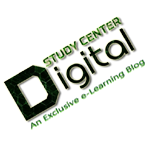Computer Security Supports the Mission of the Organization
The purpose of computer security is to protect an organization's valuable resources, such as information, hardware, and software. Through the selection and application of appropriate safeguards, security helps the organization's mission by protecting its physical and financial resources, reputation, legal position, employees, and other tangible and intangible assets.Unfortunately, security is sometimes viewed as thwarting the mission of the organization by imposing poorly selected, bothersome rules and procedures on users, managers, and systems. On the contrary, well-chosen security rules and procedures do not exist for their own sake they are put in place to protect important assets and thereby support the overall organizational mission. Security, therefore, is a means to an end and not an end in itself. For example, in a private- sector business, having good security is usually secondary to the need to make a profit.
Security, then, ought to increase the firm's ability to make a profit. In a public-sector agency, security is usually secondary to the agency's service provided to citizens. Security, then, ought to help improve the service provided to the citizen.
To act on this, managers need to understand both their organizational mission and how each information n system supports that mission. After a system's role has been defined, the security requirements implicit in that role can be defined. Security can then be explicitly stated in terms of the organization's mission.
The roles and functions of a system may not be constrained to a single organization. In an inter-organizational system, each organization benefits from securing the system. For example, for electronic commerce to be successful, each of the participants requires security controls to protect their resources. However, good security on the buyer's system also benefits the seller; the buyer's system is less likely to be used for fraud or to be unavailable or otherwise negatively affect the seller. (The reverse is also true.)
» » » To continue reading, Click here corresponding: A, B, C and D.
References:
US-CERT (from Carnegie Mellon University): www.us-cert.gov/sites/default/files/publications/TenWaystoImproveNewComputerSecurity.pdf
Small Business Computing: www.smallbusinesscomputing.com/webmaster/article.php/3908811/15-Data-Security-Tips-to-Protect-Your-Small-Business.htm
Small Biz Technology: www.smallbiztechnology.com
Entrepreneur: www.entrepreneur.com/article/225468





Post A Comment:
0 comments:
Dear readers,
Your feedback is usually appreciated. We'll reply to your queries among 24hrs. Before writing your comments, please read the the subsequent directions attentively:
1. Please comments in English. We accept only English comments.
2. Please don't Spam. All spammed comments will be deleted as before long as pobile, after review.
3. Please don't Add Links with your comments as they won't be published.
4. If We can be of assistance, please don't hesitate to contact us.